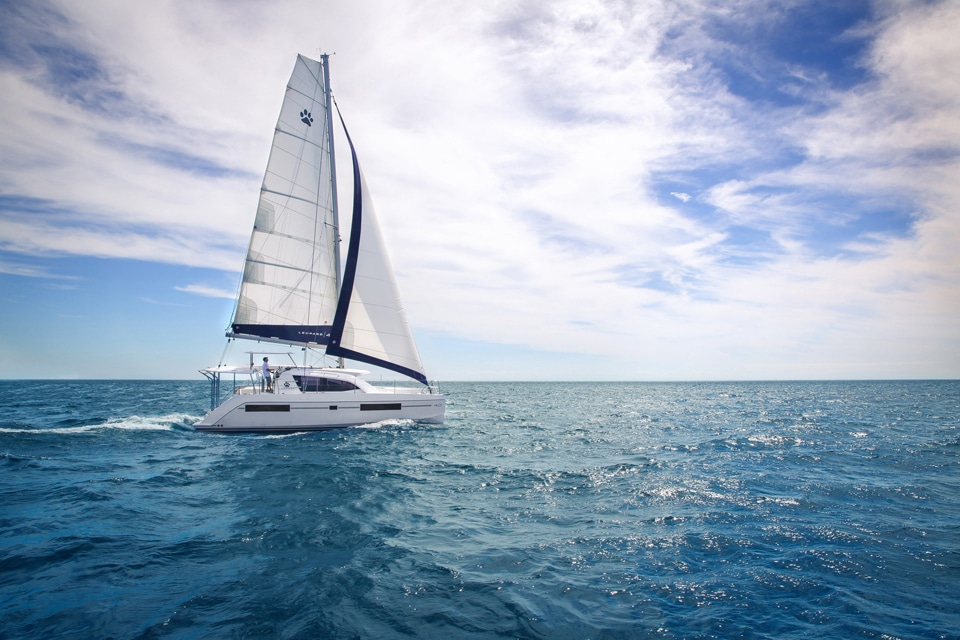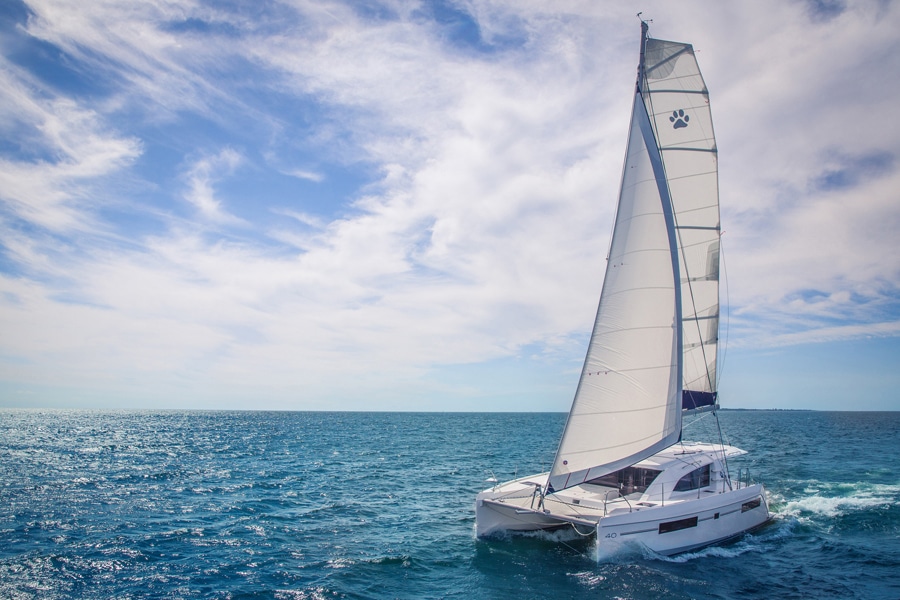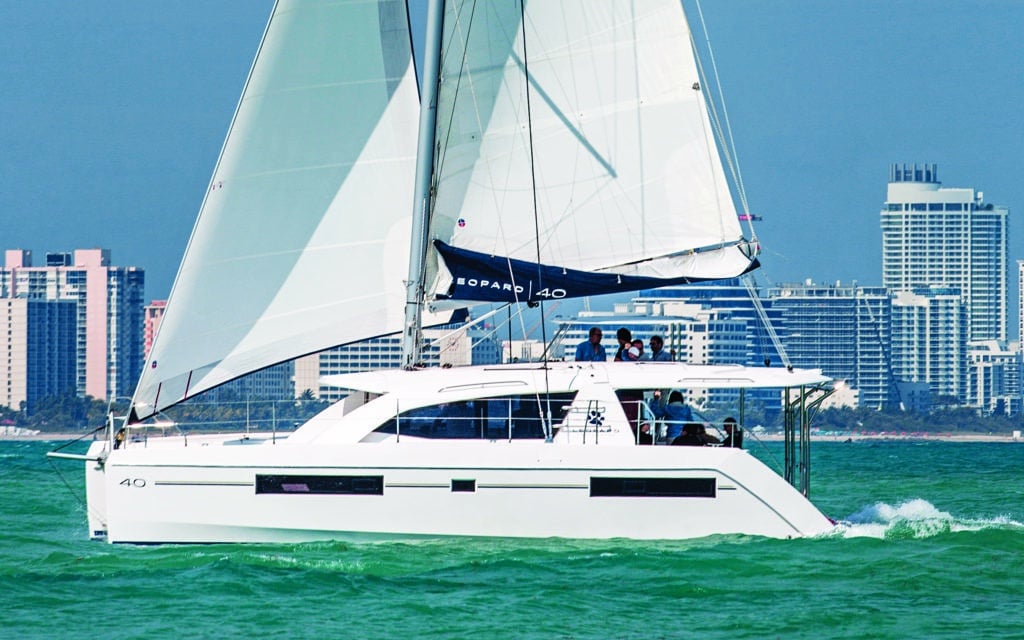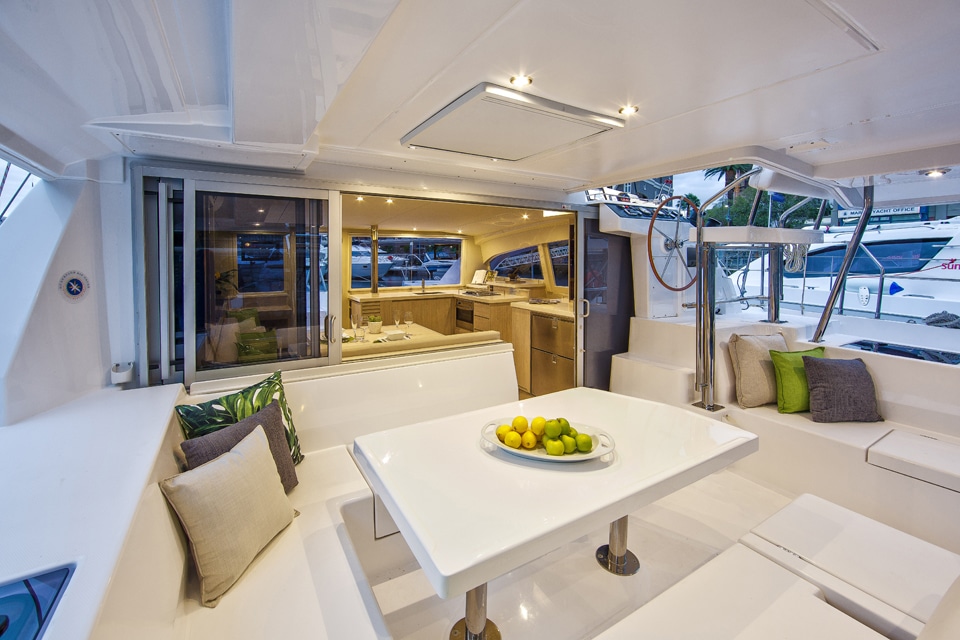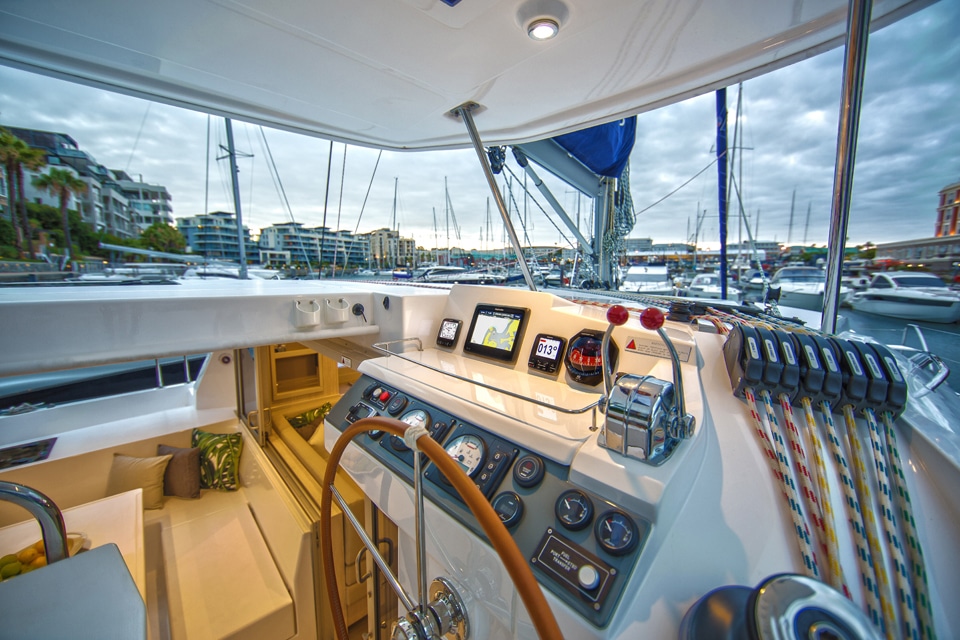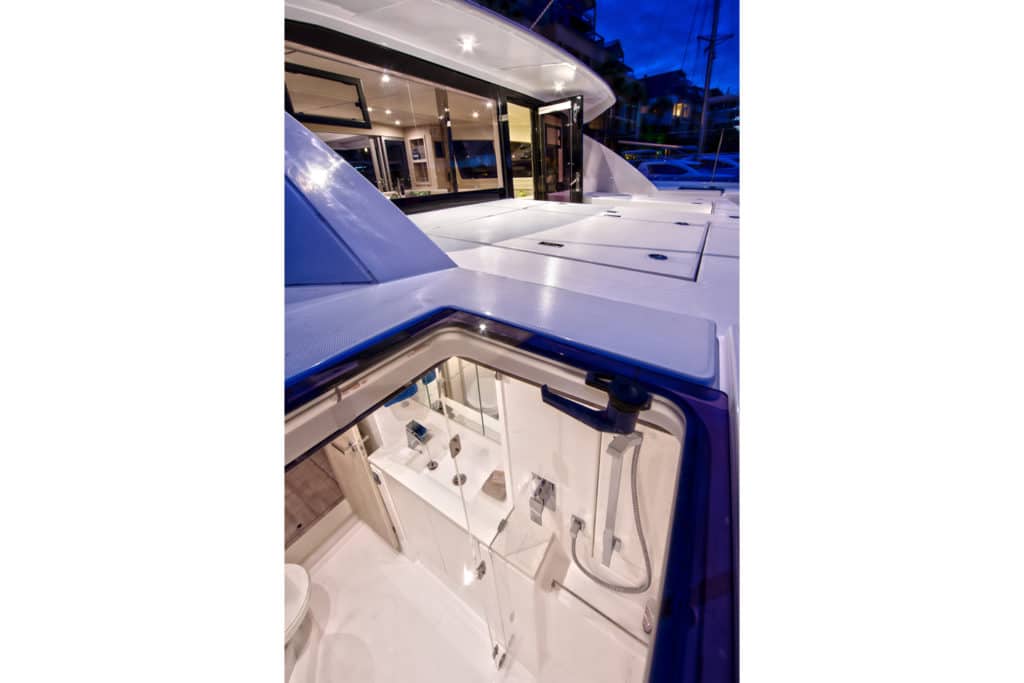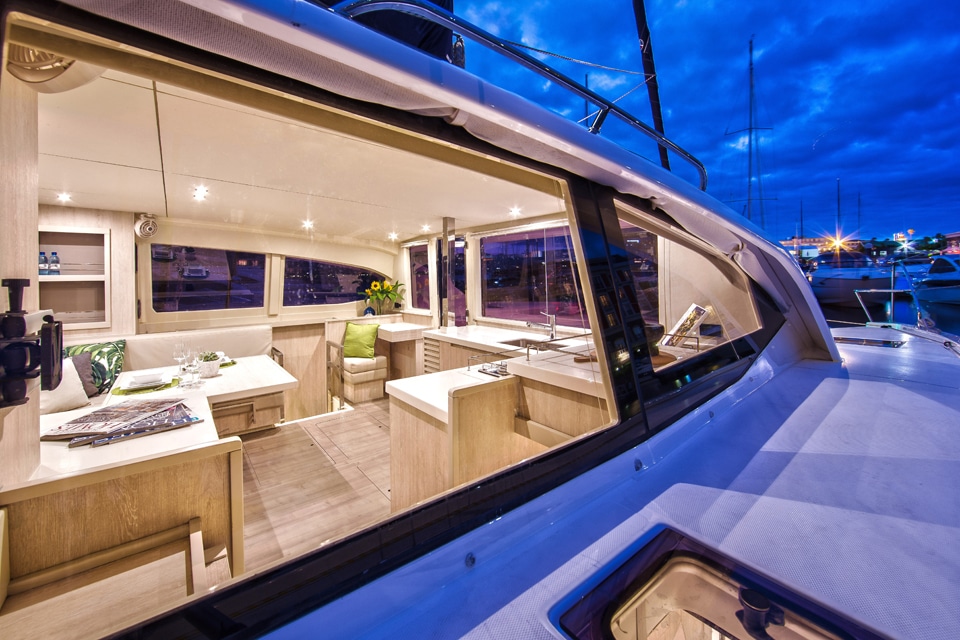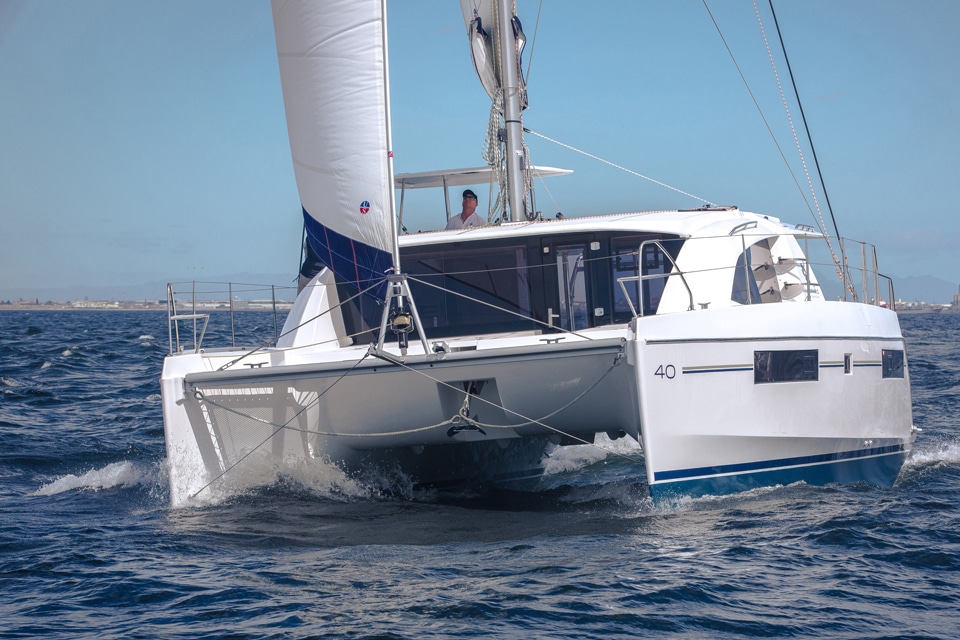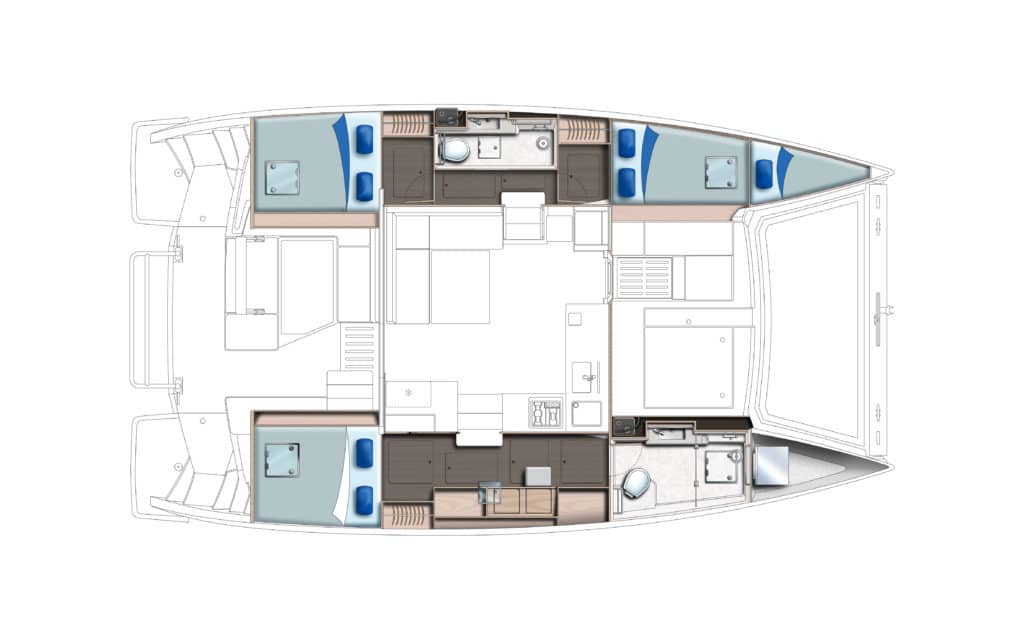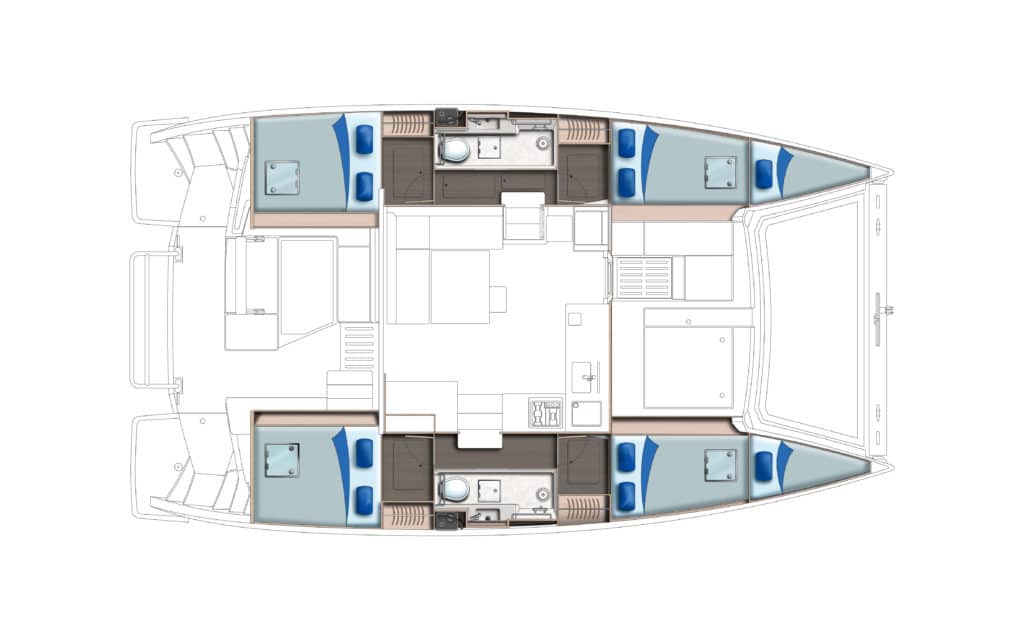The first thought that flashed into my head when I walked aboard the new Leopard 40 was “I’ll do the cooking.” It was a sunny afternoon at the Strictly Sail Miami show, and the cat’s interior was flooded with sunlight thanks to the tall, vertical glass windows spanning the front of the saloon to either side of a watertight door opening onto the forward cockpit and trampoline — a very cool feature brought over from the boat’s 44- and 48-foot siblings. The side windows, curved slightly to follow the arching line of the cabin top, are quite large as well, and right where front and side walls meet is the galley, surrounded by a truly panoramic view. It gives the cook quite literally the best seat in the house, in my humble opinion.
Did I mention that I liked the overall layout pretty well too? There’s a nav desk tucked into the front port corner of the saloon that would be a fine place to stand a night watch. And you can dine alfresco: A table that seats eight sits in the saloon’s port corner, right next to sliding doors that open wide to let the interior flow outward to the great outdoors of the cockpit. There, a second table and bench seats can handle a similar-size crowd in the shade of the hard top.
Inside and below to starboard, a large head and shower compartment are forward in the owner’s quarters, and a queen-size berth is located aft. There are multiple storage areas in lockers and drawers. To port, forward and aft double cabins share a head and shower amidships.
The new 40-footer was designed by Simonis Voogd and built by Robertson and Caine in South Africa. Robertson and Caine has Tui Marine as its only customer; the boats are sold privately under the Leopard brand and also into charter through The Moorings and Sunsail ownership programs. The 40, which sells in the $450,000 range, depending on options, also is available as a Moorings 4000, and will replace the current Moorings 3900.
In addition to considering feedback from hundreds of private owners and thousands of charterers, designer Alexander Simonis describes in his construction documents how he, the builder, and representatives from the charter companies spent four days sailing several different boats in the British Virgin Islands to determine where improvements could be made. One realization was that whether cruising short-handed or in charter, one person often does all the actual work of sailing. To make that easier, all the Leopard 40’s sail control lines are led through turning blocks and clutches to two winches adjacent to the helm. One of those winches is electric and can be used to hoist the high-aspect square-topped main when getting underway. Jib sheets and mainsheets can be led to that winch as well, though I think I’d be willing to trade the ease of push-button trimming and occasionally grind the manual winch to reduce the number of line clutches that need to be opened and closed for each tack.
The helm station, big enough for a couple of people, is raised to starboard so the helmsman stands at deck level, with good visibility all around. When sailing, you can monitor the main through a window in the hard top over the wheel, and on either tack, jib telltales are clearly visible too. A double-ended mainsheet runs through blocks on the rear corners of the cockpit hard top. This eliminates the need for a traveler but still lets you put some shape in the main. Two 70-watt solar panels also sit atop the hardtop.
We had near-perfect conditions on the day we went sailing: 15 to 17 knots of wind and moderate chop in the open waters off Fort Lauderdale. On a beam reach, we scooted along at a little better than 8 knots, and lost a knot or less when we hardened up on the breeze. Sitting at the wheel as we surged back toward shore, I could easily have imagined tacking for the Bahamas, throwing on the autopilot and heading below to whip up a meal fit for such a fine ride.
To contact Leopard Catamarans
Call 954-925-8050
leopardcatamarans.com
Mark Pillsbury is CW’s editor.
